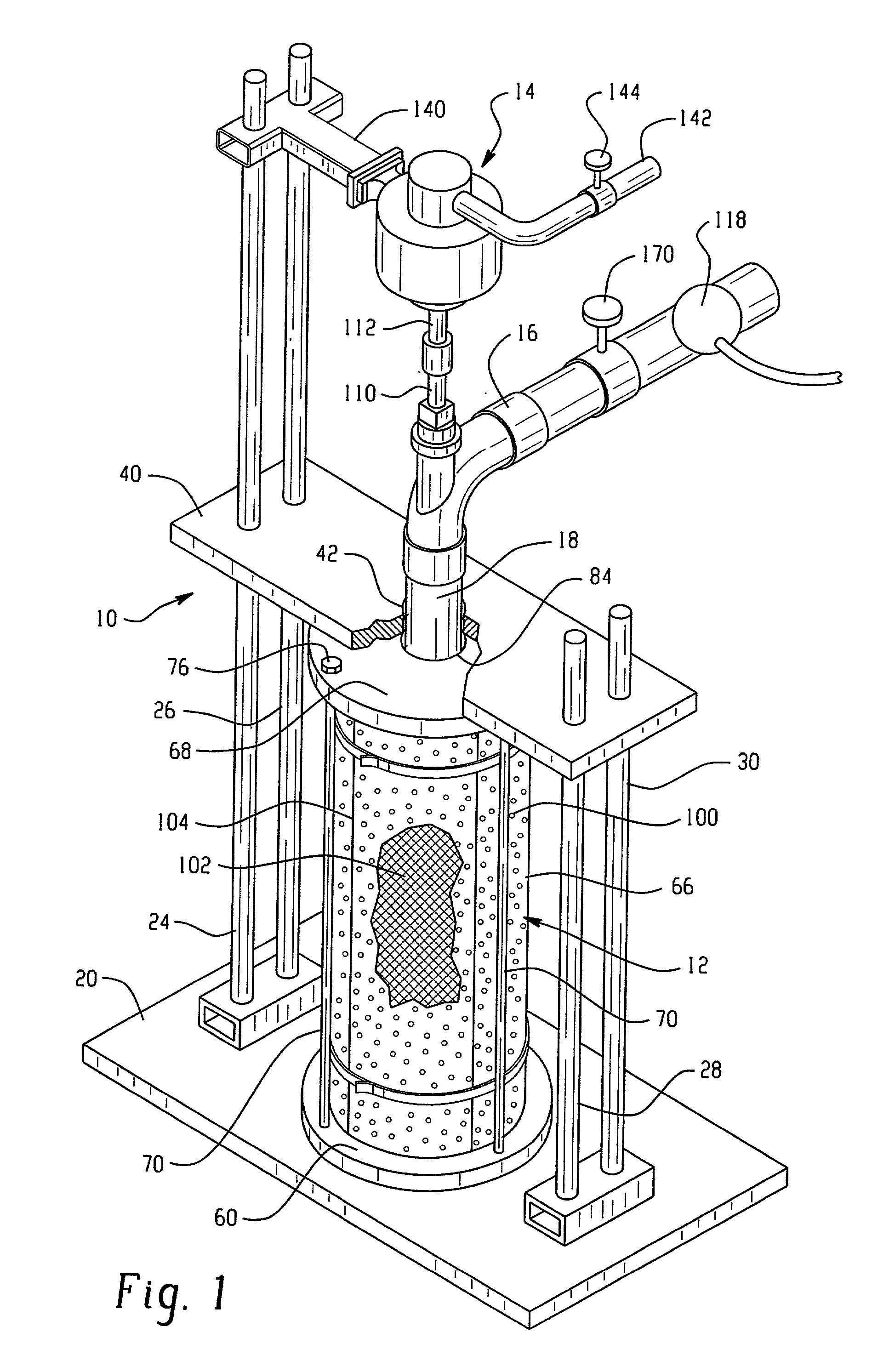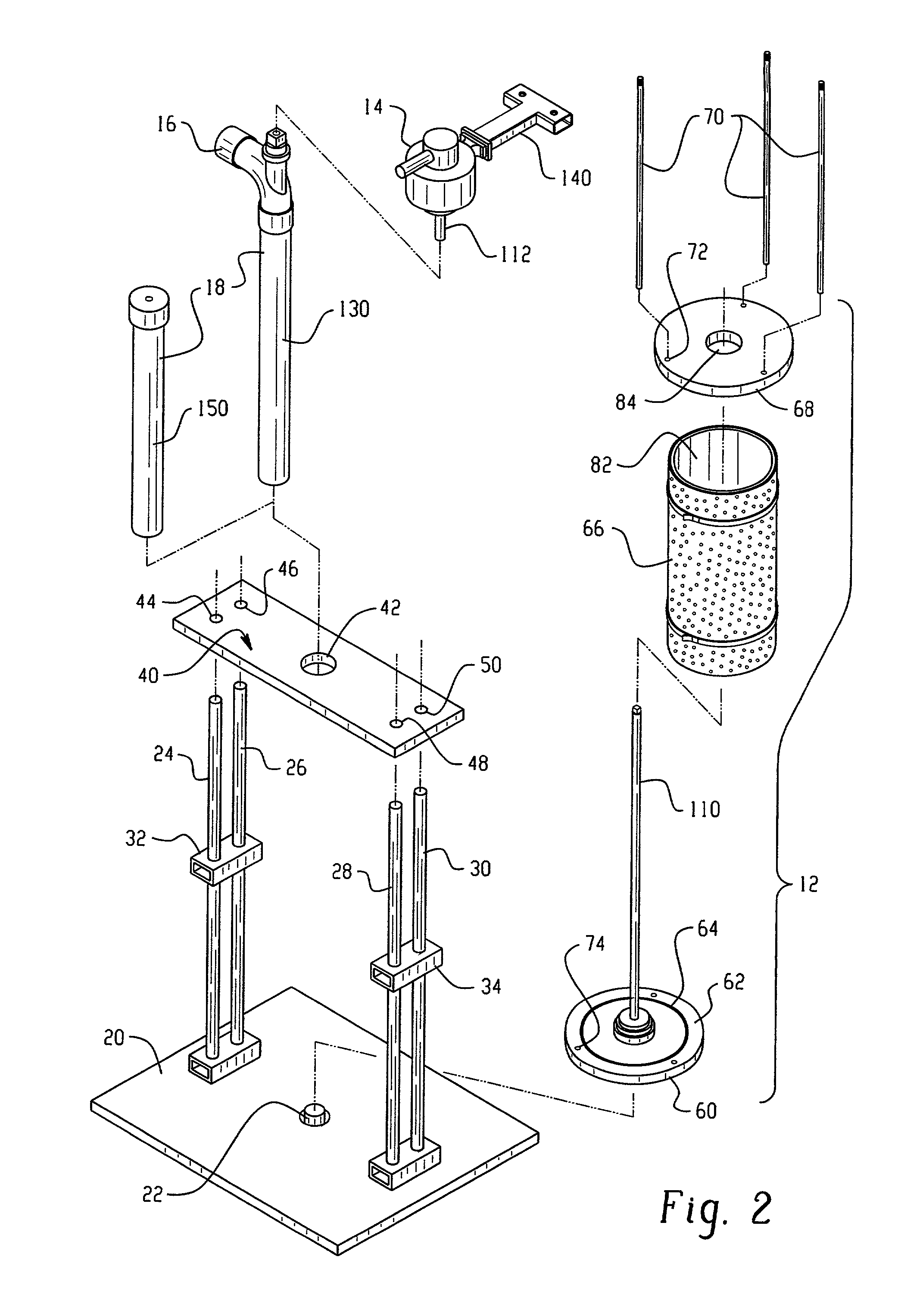Centrifugal casting of graphite for rigid insulation
a technology of graphite and centrifugal casting, which is applied in the field of forming rigid thermal insulation materials, can solve the problem of reducing the chance of outgassing during us
- Summary
- Abstract
- Description
- Claims
- Application Information
AI Technical Summary
Benefits of technology
Problems solved by technology
Method used
Image
Examples
Embodiment Construction
[0060] Cylindrical castings 174 were prepared by the centrifugal casting method described above. Isotropic pitch fibers were mixed with a binder comprising about 55% sucrose and cast in the centrifugal casting apparatus into a cylinder. After heat treating to about 1800.degree. C., the cylinder 174 had an outside diameter of 19.05 cm and inside diameter of 3.81 cm. The cylindrical casting 174 was sectioned and conductivity measurements were made in various regions of the disk 180, as shown in FIG. 15. Conductivity measurements were also made on a conventionally-formed disk cored from graphite rigid insulation board stock (FIG. 16). The conventional disk had an outside diameter of 13.61 cm and an inside diameter of 8.58 cm.
[0061] As shown in FIG. 16, conductivity measurements on the conventionally-formed cylindrical ring varied from 0.1 to 0.4. W / m-.degree. K, i.e., an average of 0.26 W / m-.degree. K and a standard deviation of 0.09 W / m.degree. K. Expressed as a percentage, the standa...
PUM
| Property | Measurement | Unit |
|---|---|---|
| temperature | aaaaa | aaaaa |
| temperatures | aaaaa | aaaaa |
| temperature | aaaaa | aaaaa |
Abstract
Description
Claims
Application Information
 Login to View More
Login to View More - R&D
- Intellectual Property
- Life Sciences
- Materials
- Tech Scout
- Unparalleled Data Quality
- Higher Quality Content
- 60% Fewer Hallucinations
Browse by: Latest US Patents, China's latest patents, Technical Efficacy Thesaurus, Application Domain, Technology Topic, Popular Technical Reports.
© 2025 PatSnap. All rights reserved.Legal|Privacy policy|Modern Slavery Act Transparency Statement|Sitemap|About US| Contact US: help@patsnap.com



